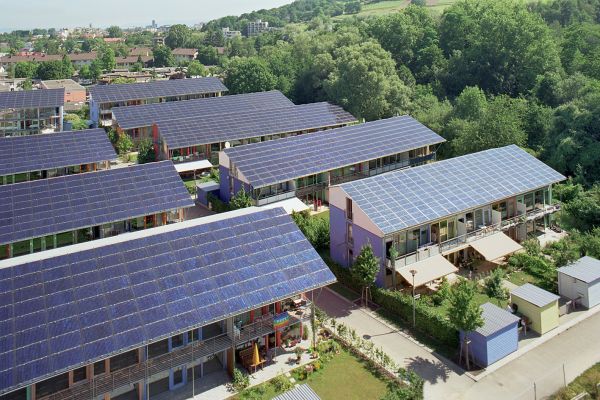German solar market grows despite lower incentives
 A dramatic shift in the German solar market hasn’t slowed its growth.
A dramatic shift in the German solar market hasn’t slowed its growth.
The world’s leading solar market skyrocketed because of a progressive feed-in-tariff program that paid solar system owners more for the power they produced than the retail power rate. The program has changed and the tariff has slipped below the retail rate. But home and business owners still see it as a good deal.
“Advertising no longer says you can earn money with solar,” said Tobias Rothacher, photovoltaic industry expert at Germany Trade & Invest in Berlin. “But now advertising says you can save with solar.”
Market conditions are now driving solar power adoption and industry growth instead of government incentives.
Solar power reached grid parity in Germany in 2011, Rothacher said. As the price of solar panels has dropped in tandem with incentives, the payback period has remained steady, Rothacher said.
In the beginning, the German FIT paid 30 Euro cents per kilowatt hour and power cost 22 cents per kilowatt hour. People could buy a solar system and pay it off with the profits in about 10 years.
Today, the FIT is 20 cents per kilowatt hour and retail power costs between 22 and 25 cents. But because the cost of panels has slipped so dramatically, those who buy solar can pay off the expense with savings on their energy bills in about the same amount of time.
Since most solar photovoltaic systems are expected to last at least 20 years, that will give solar array owners 10 years of essentially free power. It’s still an attractive prospect to most Germans, Rothacher said.
And that’s why the country’s solar industry is still strong, with projections for 5 gigawatts of new solar installations this year. German companies have a strong presence for example at this year's Solar Power International going on in Orlando, FL aiming to capture a growing US market.
The German public is paying attention to the market and taking advantage of opportunities as they resent themselves.
“When the prices of PV systems go down a bit, there is an immediate reaction in the market,” he said.
If the oversupply dwindles and there’s ever a bottleneck in production that causes prices to climb, the market would probably slow, Rothacher said.
“But I think we’re going to have an oversupply for a long time,” he said.



